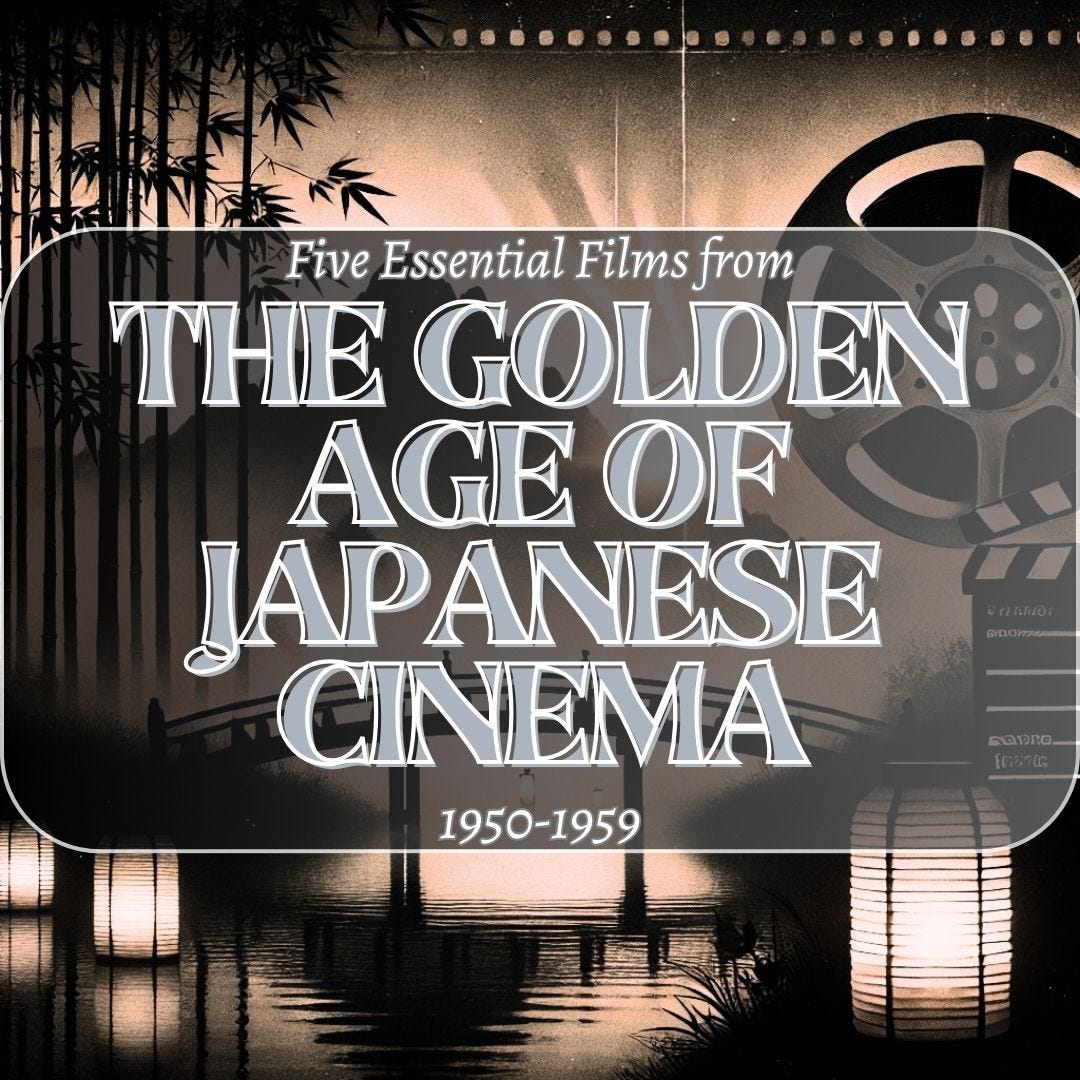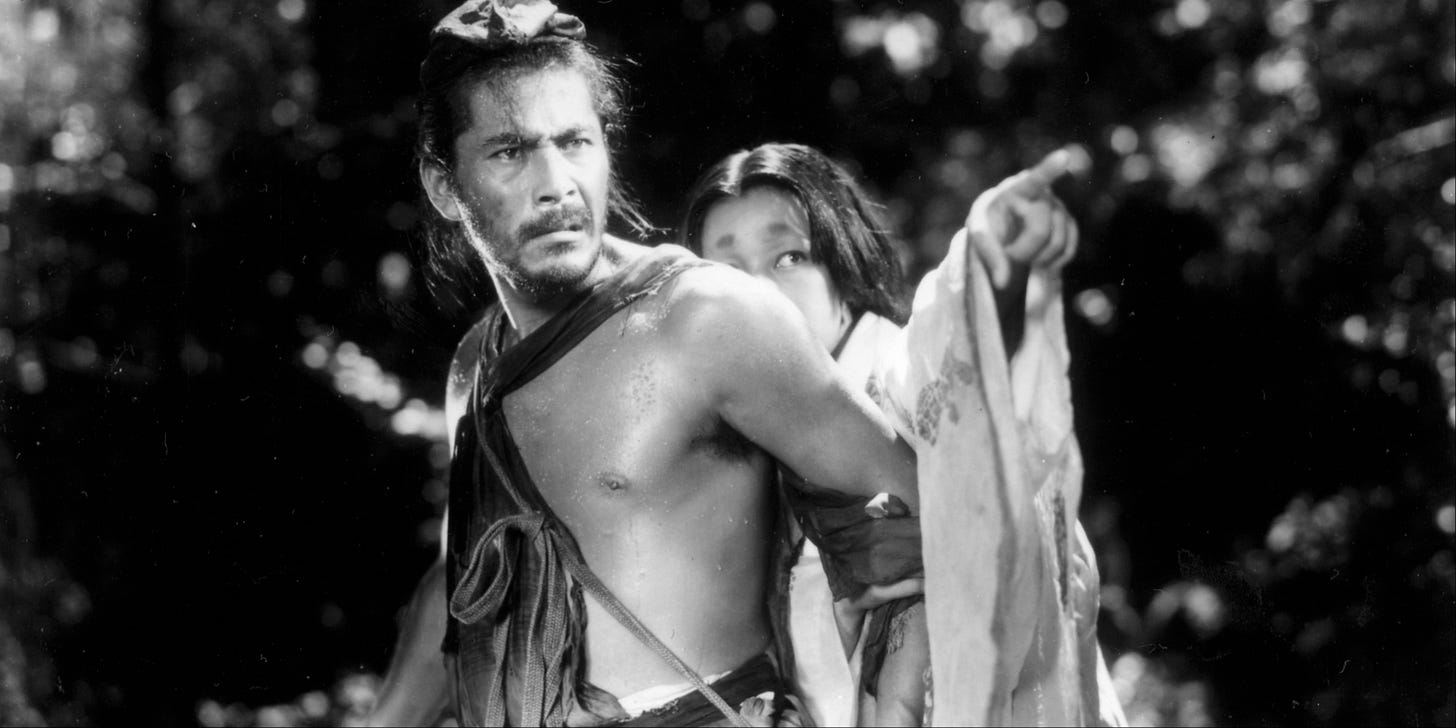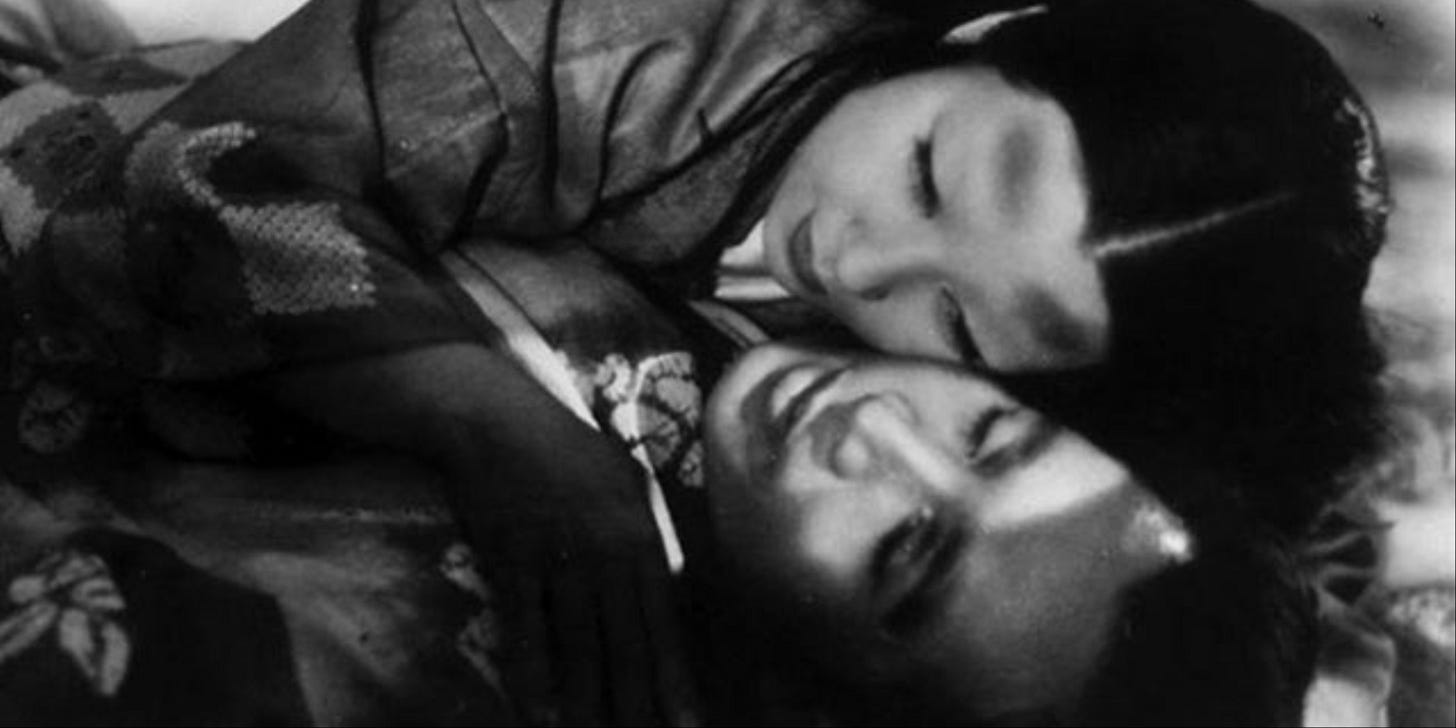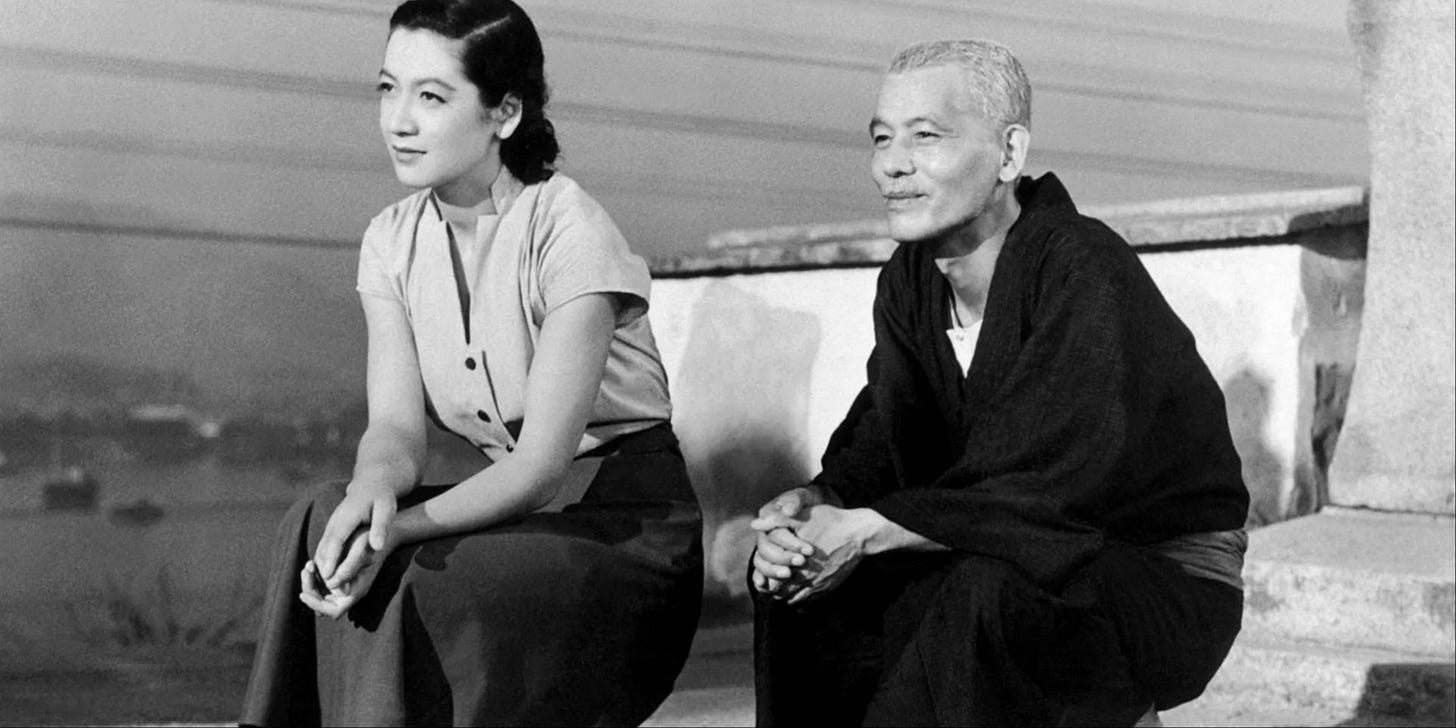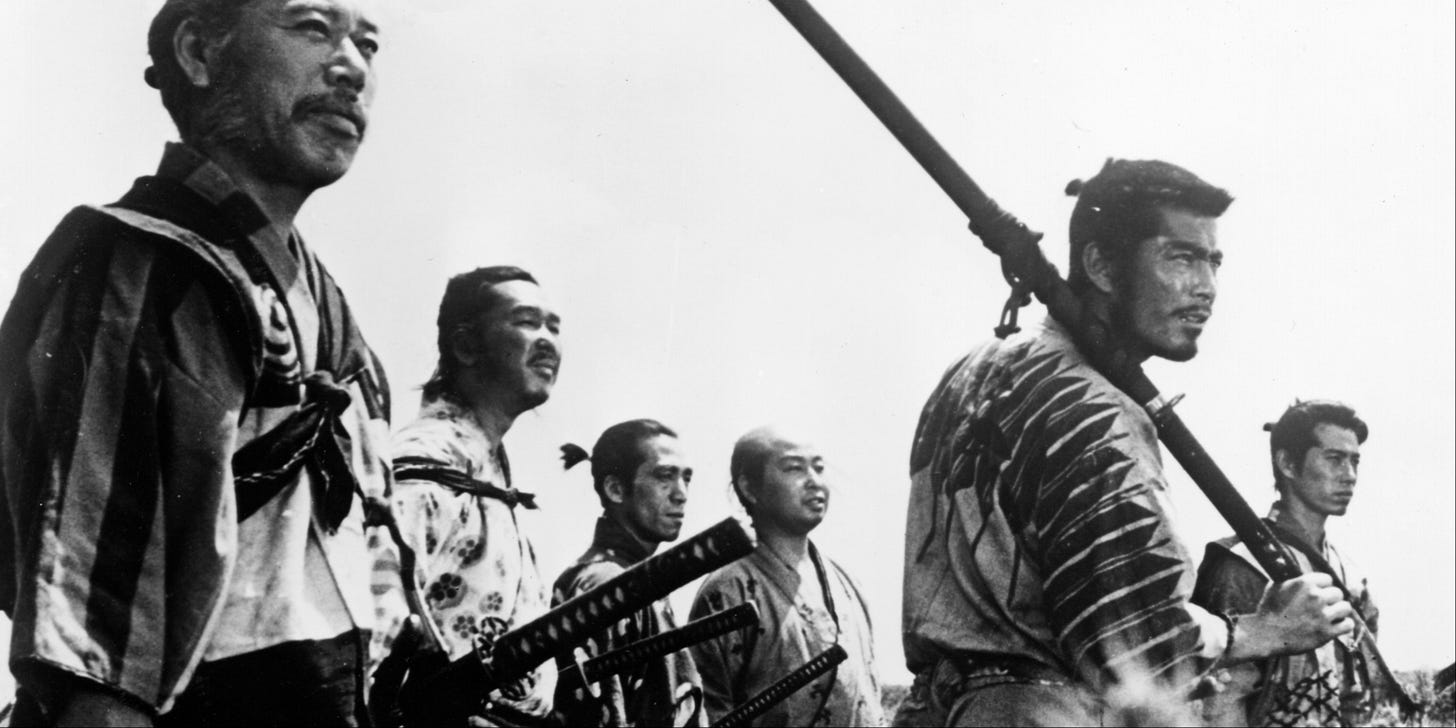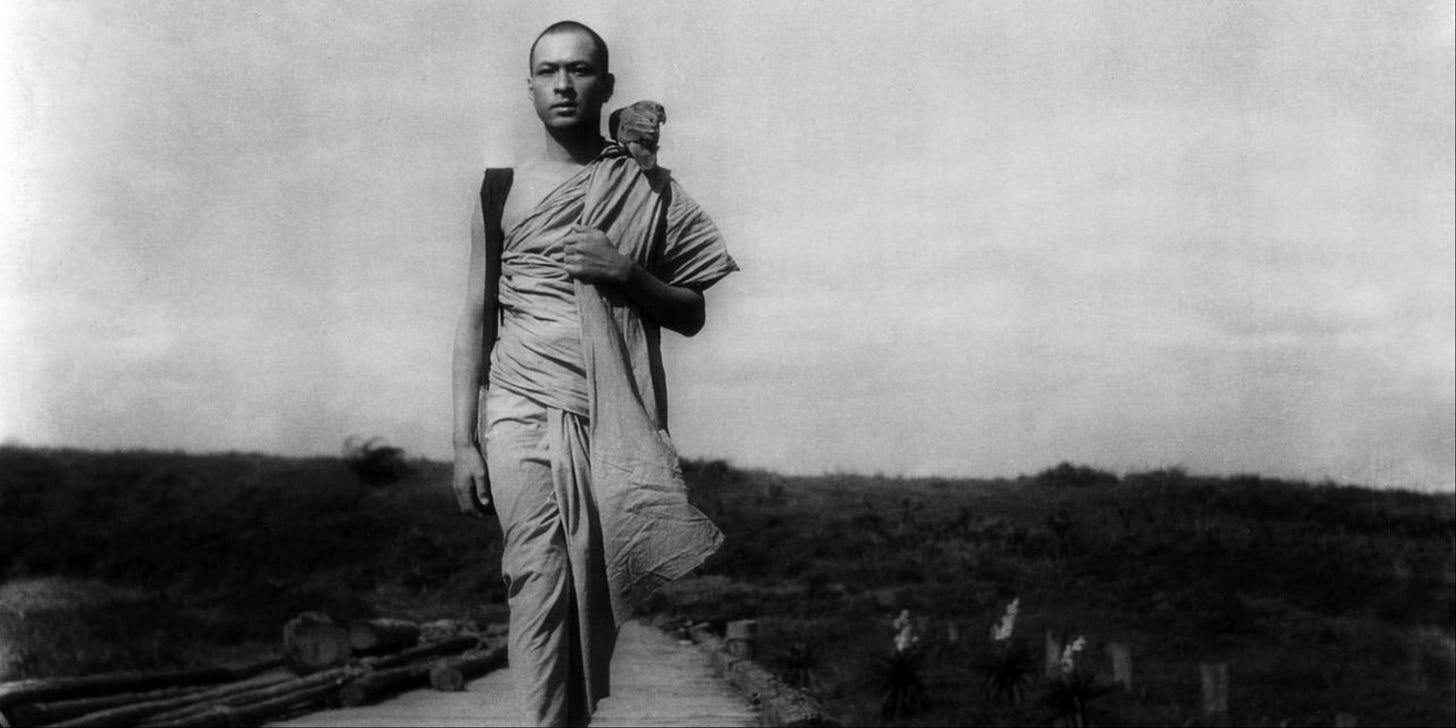5 Essential Films from the Golden Age of Japanese Cinema
The 1950s marked a dazzling era for Japanese movies.
The 1950s marked a dazzling era for Japanese cinema; an artistic renaissance that produced some of the most profound, poetic, and internationally influential films ever made. Here are five essential films that defined this golden age of Japanese cinema, presented in chronological order.
Rashomon
dir. Akira Kurosawa, 1950
Akira Kurosawa's masterful tale of conflicting perspectives exploring truth, memory, and morality. Rashomon was a downright breakthrough that brought Japanese cinema to the world stage, winning the coveted Golden Lion at the Venice International Film Festival.
Ugetsu
dir. Kenji Mizoguchi, 1953
Kenji Mizoguchi's ethereal blend of ghost story and social tragedy. Ugetsu is a visually poetic meditation on ambition, love, and the lingering shadows of war; haunting and unforgettable.
Tokyo Story
dir. Yasujiro Ozu, 1953
Yasujiro Ozu’s quiet, emotionally devastating study of family, ageing, and impermanence. Minimalist in form but immense in feeling, and often cited among the greatest films ever made.
Seven Samurai
dir. Akira Kurosawa, 1954
A towering epic by Kurosawa that redefined action cinema. Philosophical yet thrilling, intimate yet grand. This tale of honour, duty, and collective heroism remains one of cinema’s most influential films.
The Burmese Harp
dir. Kon Ichikawa, 1956
Kon Ichikawa’s deeply affecting anti-war film follows a Japanese soldier’s spiritual awakening amidst the devastation of World War II. A lyrical and compassionate reflection on loss, music, and humanity.
Honourable Mentions: Sansho the Bailiff (dir. Kenji Mizoguchi, 1954), Floating Clouds (dir. Mikio Naruse, 1955), Early Spring (dir. Yasujiro Ozu, 1956), Fires on the Plain (dir. Kon Ichikawa, 1959), The Ballad of Narayama (dir. Shohei Imamura, 1958).




